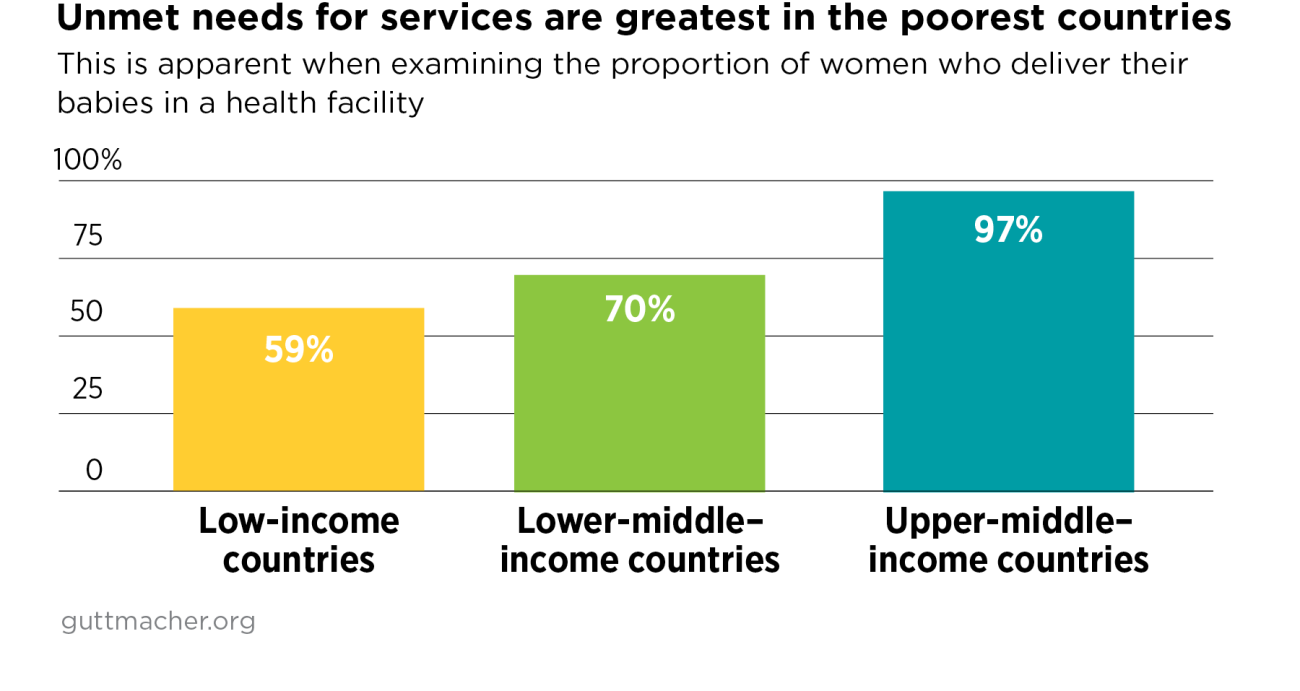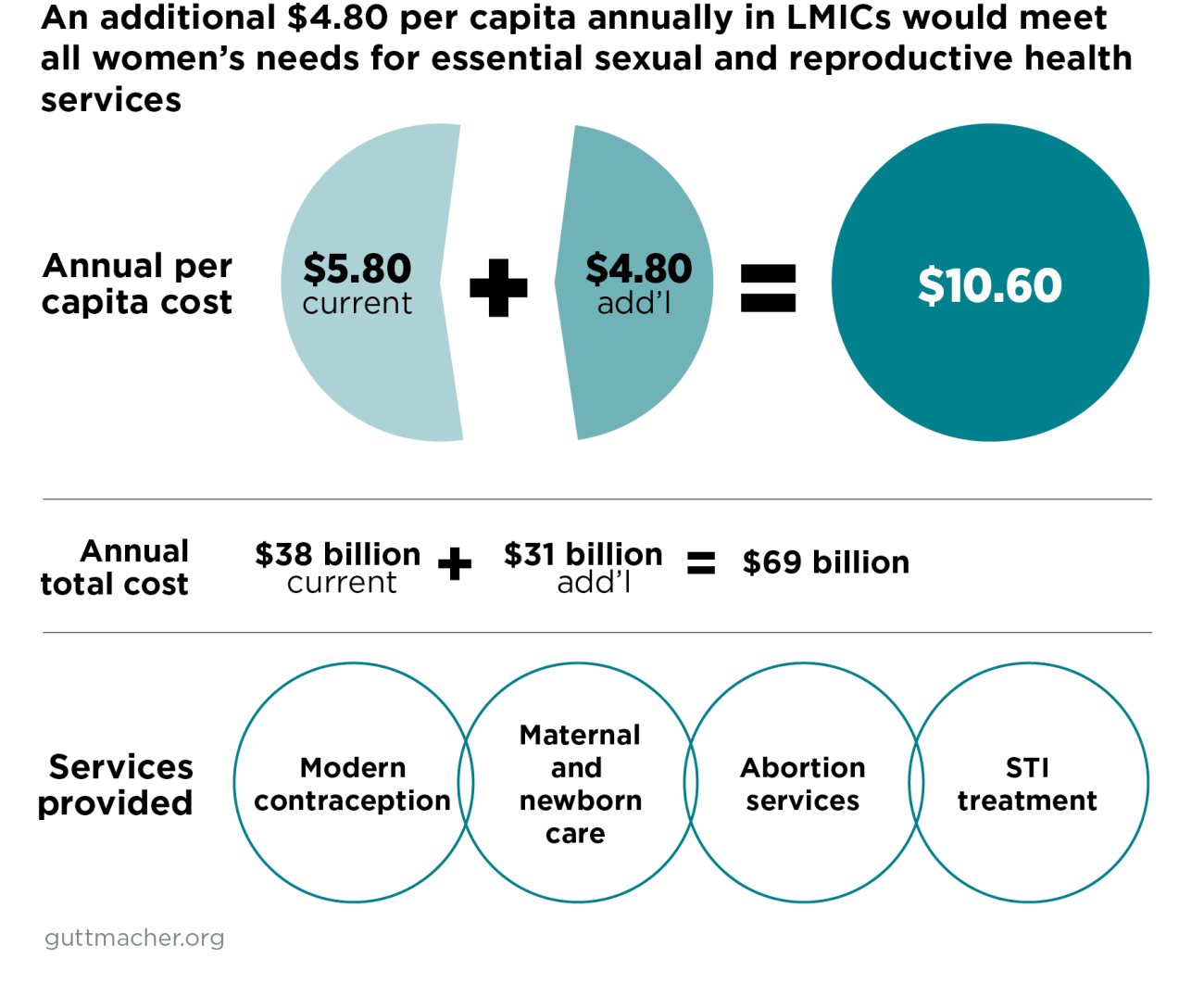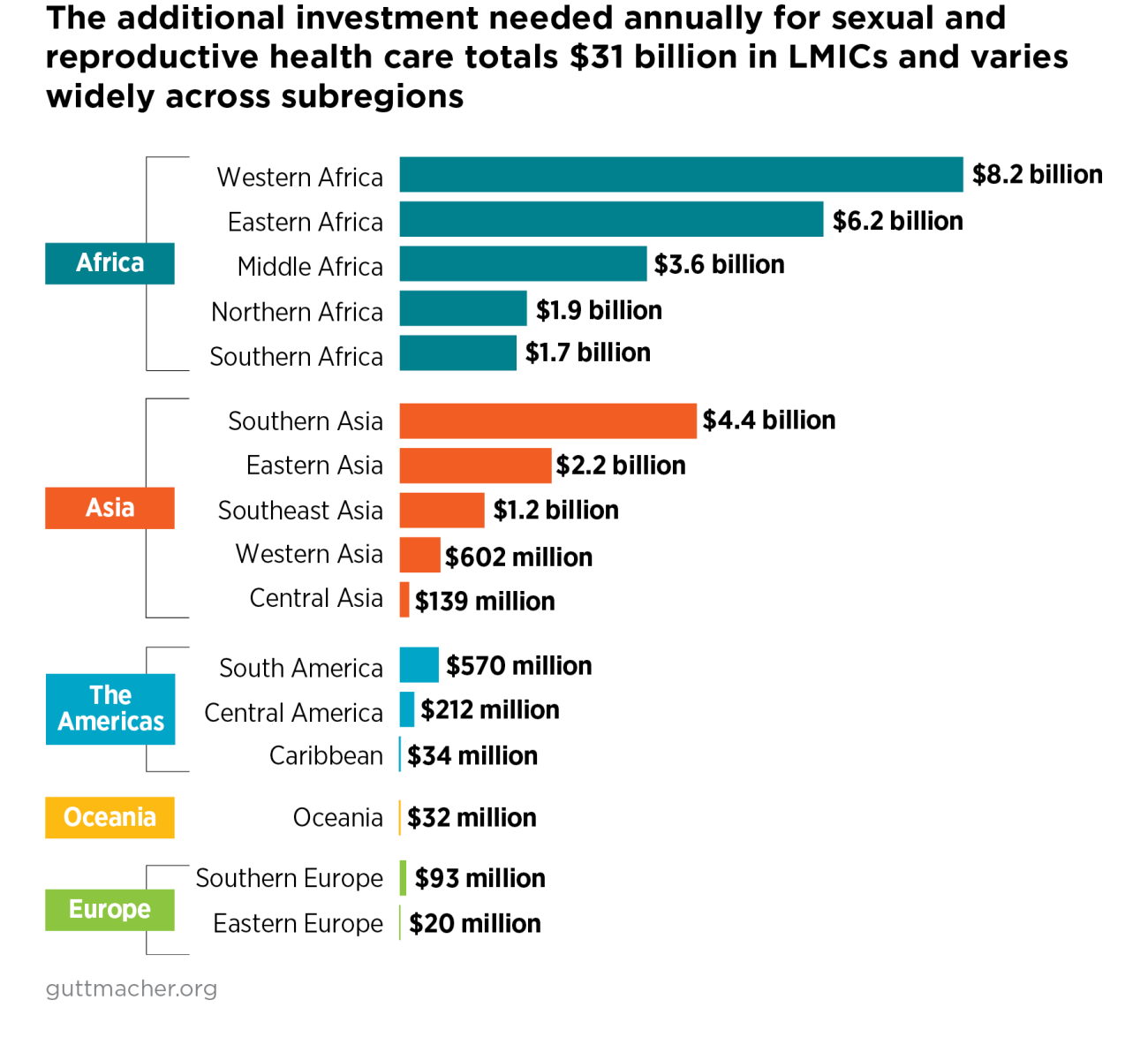The Adding It Up study examines the need for, impact of and cost of fully investing in sexual and reproductive health care—services that together ensure people can decide whether and when to have children, experience safe pregnancy and delivery, have healthy newborns, and have a safe and satisfying sexual life. The estimates pertain to women of reproductive age (15–49) in 132 low- and middle-income countries (LMICs; see map) in 2019; they cover the following services: modern contraception, maternal and newborn care, abortion care and treatment for the major curable STIs.
Investing in Sexual and Reproductive Health in Low- and Middle-Income Countries
Unmet needs for services in LMICS

- Out of 923 million women of reproductive age in LMICs who want to avoid having a pregnancy, 218 million have an unmet need for modern contraception—that is, they want to avoid a pregnancy but are not using a modern method.
- Among women who want to avoid a pregnancy, unmet need is disproportionately high for adolescents aged 15–19 (43%), compared with that among all women aged 15–49 (24%).
- Each year, 111 million unintended pregnancies occur in LMICs, and they account for 49% of all pregnancies in those countries.
- Annually, 127 million women in LMICs give birth, and many do not receive needed care.
- 50 million make fewer than four antenatal care visits
- 31 million do not deliver in a health facility
- 16 million do not receive the care they need following a major obstetric complication
- 13 million have newborns who do not receive needed care for complications
- Lack of high-quality sexual and reproductive health care puts women at risk.
- 35 million have abortions in unsafe conditions
- 299,000 die from causes related to pregnancy and childbirth
- 133 million do not receive the treatment they need for chlamydia, gonorrhea, syphilis and trichomoniasis
- Unmet needs for services are greatest in the poorest countries. For example, only 59% of women in low-income countries deliver their babies in a health facility, compared with 97% in upper-middle–income countries.

Impacts of expanding and improving services

- Unintended pregnancies, unsafe abortions and maternal deaths would drop by about two-thirds if all women in LMICs wanting to avoid a pregnancy were to use modern contraceptives and all pregnant women were to receive care that meets international standards.
- Newborn deaths would drop by two-thirds, and new HIV infections among babies six weeks and younger would drop by almost nine-tenths, if all mothers and newborns received recommended care.
- Cases of pelvic inflammatory disease and infertility caused by chlamydia or gonorrhea would be eliminated if all women infected with these STIs were given effective and timely treatment.
Cost of meeting all service needs in LMICs
- A package of sexual and reproductive health care that would meet all women’s needs for modern contraception, maternal and newborn care, abortion services and treatment for the major curable STIs would cost $69 billion annually in LMICs.
- This total represents a $31 billion (83%) annual increase over the current cost of sexual and reproductive health care. When considered on a per capita basis, the increase is just $4.80 per year.

- The additional investment needed varies widely across subregions. Sub-Saharan Africa and Southern Asia together would account for more than three-quarters of the increase in cost.

- Every dollar spent on contraceptive services beyond the current level would save $3 in the cost of maternal, newborn and abortion care because use of contraceptives reduces the number of unintended pregnancies.

Investing for the future
- The interventions that make up this package of care have proven feasible to implement in diverse settings around the world.
- Investing in them provides national and local governments, the private sector and international development partners with good value for money.
- By saving lives and improving women’s health and well-being, sexual and reproductive health care benefits individuals and families and contributes to countries’ social and economic development. Such care would also enable people to exercise their sexual and reproductive rights.
Source
The information in this fact sheet can be found in Sully EA et al., Adding It Up: Investing in Sexual and Reproductive Health 2019, New York: Guttmacher Institute, 2020, https://www.guttmacher.org/report/adding-it-up-investing-in-sexual-repr….
Acknowledgments
This fact sheet was made possible by UK Aid from the UK Government and grants from the Bill & Melinda Gates Foundation, The Children’s Investment Fund Foundation and the Dutch Ministry of Foreign Affairs. The findings and conclusions contained within are those of the authors and do not necessarily reflect positions or policies of the donors.
Additional Downloads
- This fact sheet is also available in German adding-it-up-investing-in-sexual-reproductive-health-deutsch.pdf
Reproductive rights are under attack. Will you help us fight back with facts?
Read More
Unintended Pregnancy and Abortion Worldwide
Full investment would improve the quality of sexual and reproductive health care for women who currently receive services and would expand services to reach all women in need.

